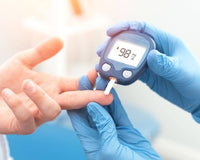Nicotine replacement therapy is a medically approved method of treating nicotine addiction. It provides a structured, proven pathway toward independence from nicotine reliance. There are many available ways to undergo nicotine replacement therapy. These include the use of nicotine patches, gum, inhalers, and nasal spray. In this article, we discuss nicotine replacement therapy and the multiple available types of nicotine replacement therapy.
What Is Nicotine Replacement Therapy?
Nicotine replacement therapy is a medically approved way to treat addiction to nicotine, the main addictive substance in tobacco. Smoking, chewing, or sniffing tobacco can lead to an addiction to nicotine. Nicotine replacement therapy works by providing a structured path toward independence from addiction. It involves the administration of nicotine through other methods followed by gradual reduction of nicotine dosage.
How Does Nicotine Replacement Therapy Work?
Nicotine replacement therapy works to reduce withdrawal symptoms and cravings that make it difficult for people to completely give up tobacco. It is possible to rid oneself of a reliance on nicotine, but most people who attempt to quit unassisted are unsuccessful. In fact, most who attempt to quit smoking will not succeed for longer than a month before relapse. Nicotine replacement therapy provides a structured, reliable method for gradually reducing nicotine dependence.
Types of Nicotine Replacement Therapy
There are four types of nicotine replacement therapy that have been approved by the U.S. Food and Drug Administration (FDA). These include nicotine patches, nicotine gum, inhalers, and nasal sprays.
Nicotine Patches
Nicotine patches give a measured dose of nicotine through the skin into the bloodstream. The patch attaches to the skin like an adhesive sticker and delivers a small, constant amount of nicotine. Many different types and strengths of nicotine patches are available. Full strength patches range from 15 to 22 mg of nicotine while weaker patches range from 5-14mg. The patch should be put on in the morning and applied to a clean area without much hair below the neck and above the waist.
Nicotine Gum
Nicotine gum is a fast-acting form of nicotine therapy in which nicotine is consumed through the mucous membrane of the mouth. Nicotine gum can be bought over the counter and usually comes at strengths of 2 mg and 4 mg. It is not meant to be chewed like regular gum. Instead, nicotine gum should be chewed on and off for thirty minutes.
One advantage of nicotine gum is that users are able to control the amount of nicotine they receive. Gum can simply be spit out and thrown away if the dosage seems to be too much. Reducing the amount of nicotine gum one chews in a day can help slowly reduce dependence on nicotine.
Nicotine Inhalers
A nicotine inhaler consists of a plastic tube attached to a cartridge of nicotine. Unlike other treatment methods, an inhaler delivers nicotine initially into the mouth, instead of the lungs. Some people find inhalers to be the most effective treatment method because the process by which they are used is very similar to that of a cigarette, making them easy to adapt to.
Nasal Spray
Nicotine nasal spray delivers nicotine to the bloodstream much quicker than most other methods of nicotine replacement therapy. It is a convenient method of nicotine therapy that can be kept close by and relieves withdrawal symptoms very quickly.
Most people who use nasal sprays are instructed to use either one or two doses per hour. Each dose involves a single spray in each nostril. The FDA recommends that no one use nicotine nasal sprays for longer than six months of daily use.
How to Decide On Nicotine Replacement Therapy
Some people find certain types of nicotine replacement therapy more effective than others. A decision about which therapy to use should be made based on lifestyle factors like how often you smoke and which repetitive motions help you relax.
Can You Overdose From Nicotine Replacement Therapy?
Nicotine overdose is possible but unlikely while using nicotine replacement therapy. Most therapy options do not contain enough nicotine to cause an overdose. However, using multiple nicotine treatments at the same time may cause overdose. Doctors may sometimes prescribe two nicotine replacement options at once to speed up treatment, but will never prescribe enough nicotine to cause any serious side effects. It is essential to follow a detailed plan of dosage and frequency while undergoing nicotine replacement.
Who Should Not Pursue Nicotine Replacement Therapy?
In most cases, nicotine replacement therapy is a safe and reliable way to slowly stop smoking. Nicotine replacement therapy has also not yet been approved for use by people who smoke less than ten cigarettes a day. Many treatment centers and medical professionals only prescribe nicotine replacement therapy for light smokers.
Alternatives to Nicotine Replacement Therapy
While nicotine replacement therapy is an effective treatment option for some smokers, others may find it to be a difficult plant to stick to. Over the counter and prescription medications can also be useful in treating nicotine addiction. Drugs that come as oral tablets, such as buproprion, have been shown to be effective at reducing withdrawal symptoms from smoking.
Nicotine Replacement Therapy: Summary
Nicotine replacement therapy is a popular method used to reduce nicotine addiction and prevent withdrawal. It provides a structured path to decreasing nicotine dependence.
Most nicotine replacement therapy options provide small doses of nicotine to slowly decrease addiction. Popular nicotine replacement methods include patches, sprays, inhalers and nicotine gum.








